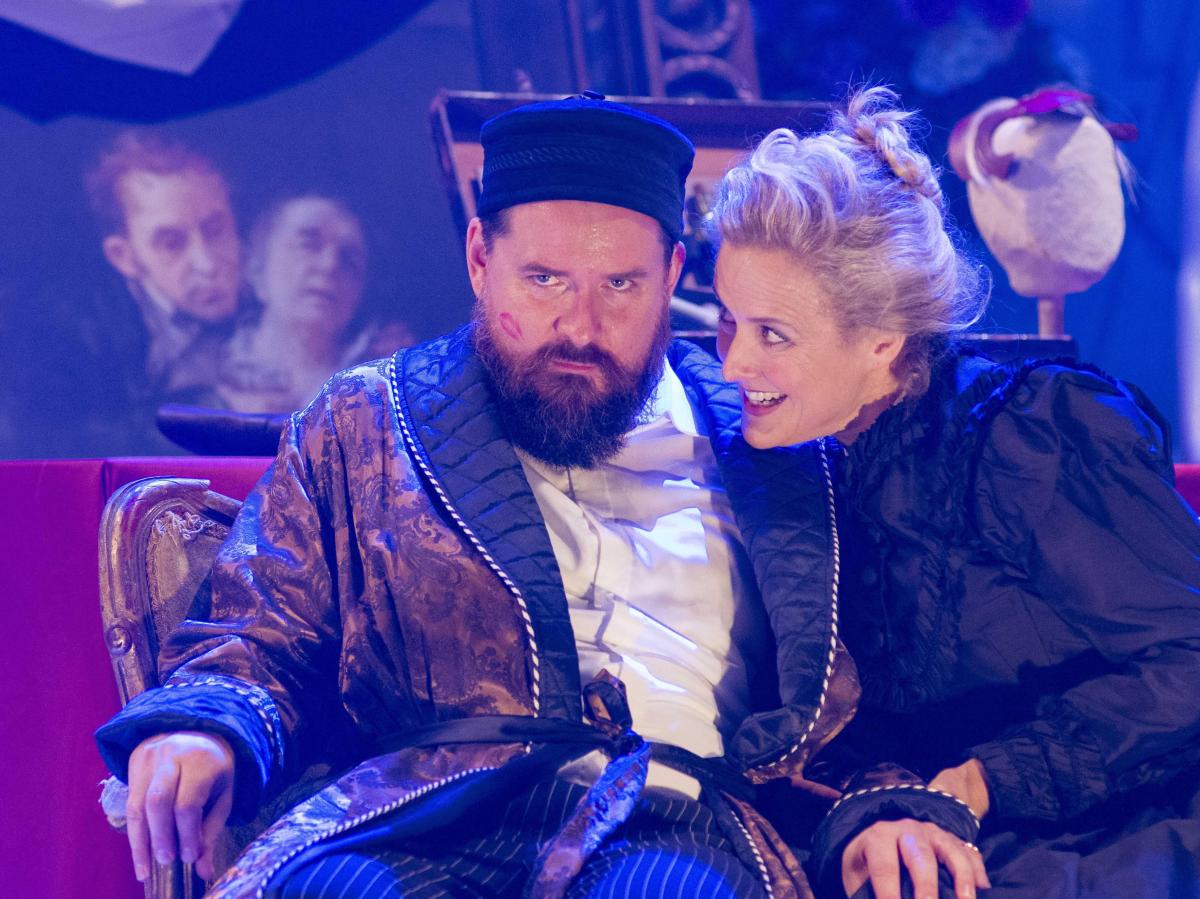Rameau: Anacrèon and Pigmalion. Photograph by Ilona Brooks, Pinchgut Opera.
For this year’s winter season Pinchgut have brought us a triple bill of three short opera (intermezzo), Rameau: Anacrèon and Pigmalion was full of superb exquisite playing by the Orchestra of the Antipodes on their period instruments. Energetically, enthusiastically directed by Erin Helyard, we are transported to the competitive opera world of Paris in the 1750s: viewing two actes-de-ballet by French composer Jean-Philippe Rameau – Anacréon and Pigmalion – with the Italian Leonardo Vinci’s comic intermezzo Erighetta e Don Chilone by contrast in the middle.
Director Crystal Manich has concocted an overall conceit of having the three works staged as part of the preparations for a lavish costume party at a contemporary art gallery. With the gallery staff, donors and the like playing all the various characters. The ‘framing device’ is also used as a ‘mirror’ or reflection where at various points the characters view themselves – do they see us the audience observing?
The 21st century gallery itself is in grey, neutral colours with ladders, sliding plinths and a huge well stocked bar of drinks. The three works are all about love and desire, Rameau’s works being more serious, using the ancient myths and fables of the gods to explore philosophical ideas of the nature of love and reality for example. But Manich has also injected plenty of rude humour into the programme.
The first work is Anacréon, questioning whether love and drunkenness can be synchronized. Bearded Richard Anderson as a wealthy donor to the gallery becomes the drunken Anacréon who taunts his wife who then leaves him. He is in fine form and at one point is draped in a gallery dust sheet like a toga. Lycoris (mezzo-soprano Allegra Giagu), his harassed wife, is decked with flowers as she looks forlornly out at the audience through an empty picture frame, alternately either ignored or drunkenly serenaded. Soprano Taryn Fiebig is the severe art academic and ex-wife of the donor, who becomes a fiery priestess of Bacchus, furious that Love should be praised in Bacchus’s temple.The choreography for her and her maenads is quite formal and stylized. Anacréon wakes up from his sozzled dreams in a storm and rescues an unhappy child who turns out to be Cupid (fabulous Lauren Zolezzi), and this begins a process of self-discovery in him that sets his world aright eventually. Zolezzi’s supple, sparkling agile soprano soars as she is a mischievous Puck -like school-girl Cupid, her wings made of flowers in a huge floral bouquet. Her shimmering aria Avant ce jour, is a highlight. Anderson is contrite in his somewhat darker Sans Vénus et sans ses flammesi, before all ends charmingly in a joyous,celebratory ending where everything is put to rights and both love and wine are extolled.
Vinci’s Erighetta e Don Chilone is presented as a play-within-a-play, Anderson and Fiebig ‘rehearsing’ with a script as assorted gallery staff observe. At times – as in all three works – they act as Japanese Koken unobtrusively scene shifting and helping with costumes. It is musically glorious and enthusiastically grabbed as a ‘comic’ showcase by Anderson and Fiebig. It has similarities in style to commedia del arte and Moliere’s oeuvre. The wit of the plot hinges on the contrast between the character’s interior monologues and their formal, polite exterior. As Don Chilone, Anderson is in fine voice and imposing in an ornate brocaded dressing gown. Fiebig has much fun stealing the show as the wily, scheming Erighetta. Her first aria is all lonely and sorrowful, lamenting her widowhood and uncertain status but then she has a wicked time dressing up in disguise as ‘Doctor Feelgood’, prescribing marriage as the remedy for Don Chilone’s maladies.
After interval came the ravishingly exquisite Pigmalion by Rameau. The gallery preparations have madly increased and there is now a very long table laden with a feast and several candelabra. There is a mysterious mannequin hidden under drapes in the middle of the room. Pigmalion (Samuel Boden) looks like a fairy tale prince and has a limpid, languishing aria at the beginning bemoaning his love for the inanimate sculpture he has created .His voice is perhaps light but it is a performance of great virtuosity. Pigmalion gets into trouble with his would be girlfriend Cephise (Morgan Balfour) for ignoring her and she furiously stalks off. There is a magnificent ‘transformation scene’ coordinated by Cupid (Zolezzi again, but this time more restrained and refined and in a ‘trousers‘ role as a pageboy in a white suit) – when Fiebig as The Statue becomes alive it is breathtakingly magical. There are perhaps allusions to Strauss’ Der Rosenkavalier especially towards the end. Most of the remainder of the work is a hymn to the powers of love, with vibrant yet formal dancing as if from the French court at Versailles. There are perhaps allusions to Strauss’ Der Rosenkavalier especially towards the end and the Gallery people change back at the conclusion to their 21st century selves (with a repeat of the ‘framing’ visual motif), and all ending happily.
Opera, power and politics, (un)realities of plots and the development of philosophical and musical ideas of Paris in the 18th century are brought into the 21st century in this charming programme.
Rating: 4 stars out of 5
Rameau: Anacrèon and Pigmalion
Pinchgut Opera’s Anacréon & Pigmalion is at City Recital Hall until June 20
ARTIST INFORMATION
Taryn Fiebig: The Priestess of Bacchus (Anacréon), The Statue (Pigmalion), Erighetta (Erighetta e Don Chilone)
Richard Anderson: Anacréon (Anacréon), Don Chilone (Erighetta e Don Chilone)
Lauren Zolezzi: Cupid (L’Amour) (Anacréon), Cupid (L’Amour) (Pigmalion)
Samuel Boden: Pigmalion (Pigmalion), Agathocle (Anacréon)
Morgan Balfour: Céphise (Pigmalion)
Orchestra of the Antipodes
Erin Helyard Conductor
Crystal Manich Director
Alicia Clements Set Designer
Melanie Liertz Costume Designer
Matthew Marshall Lighting Designer





